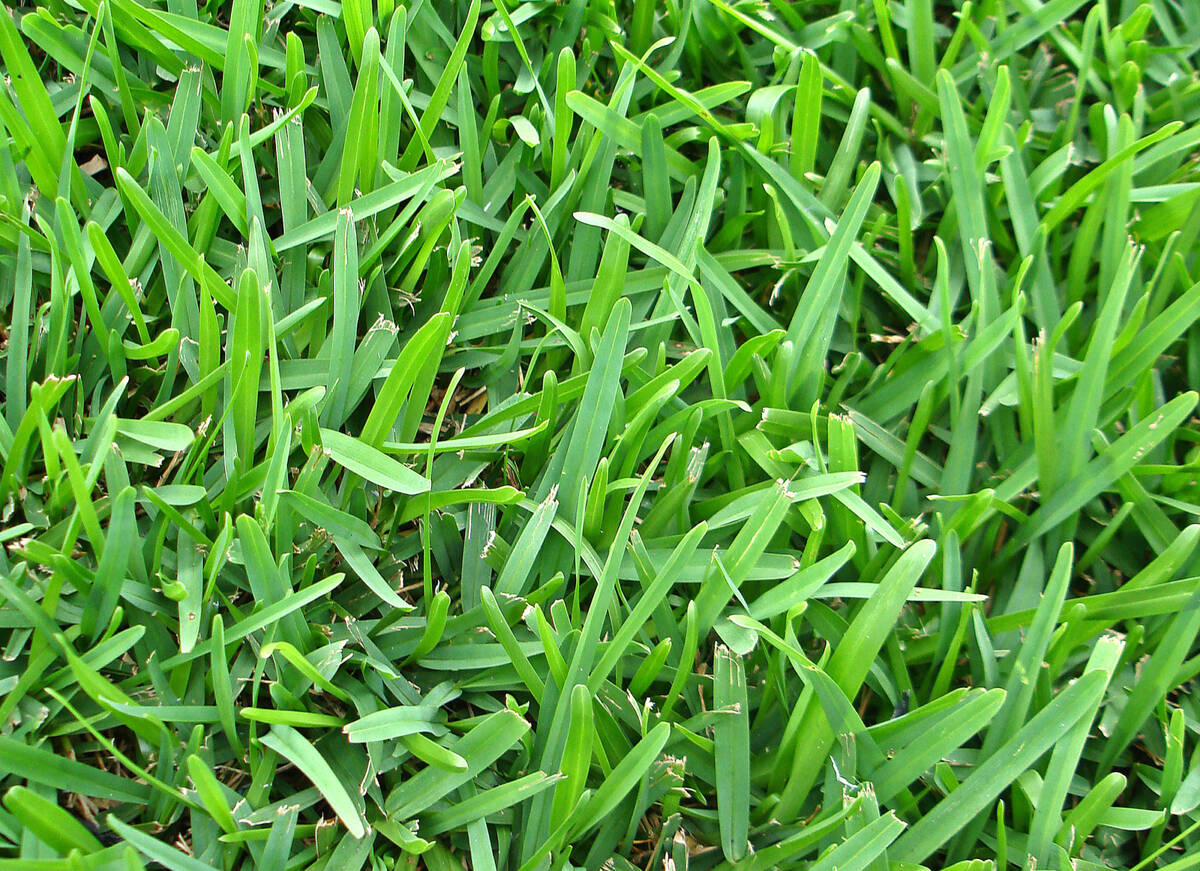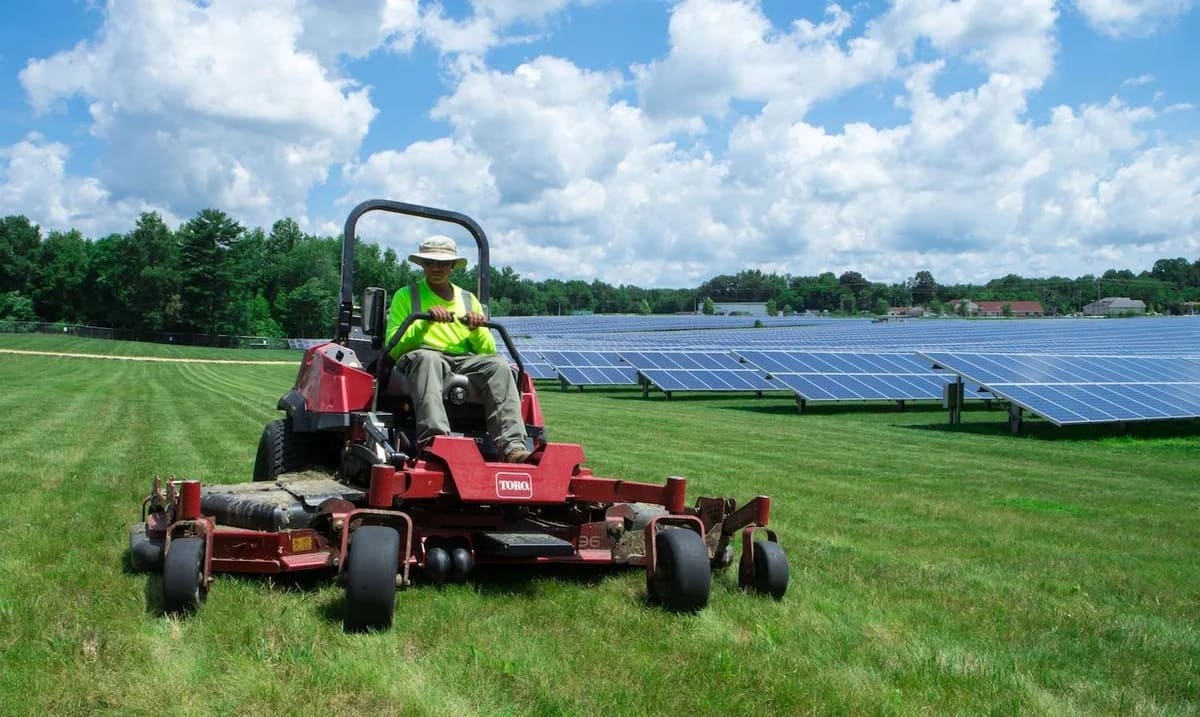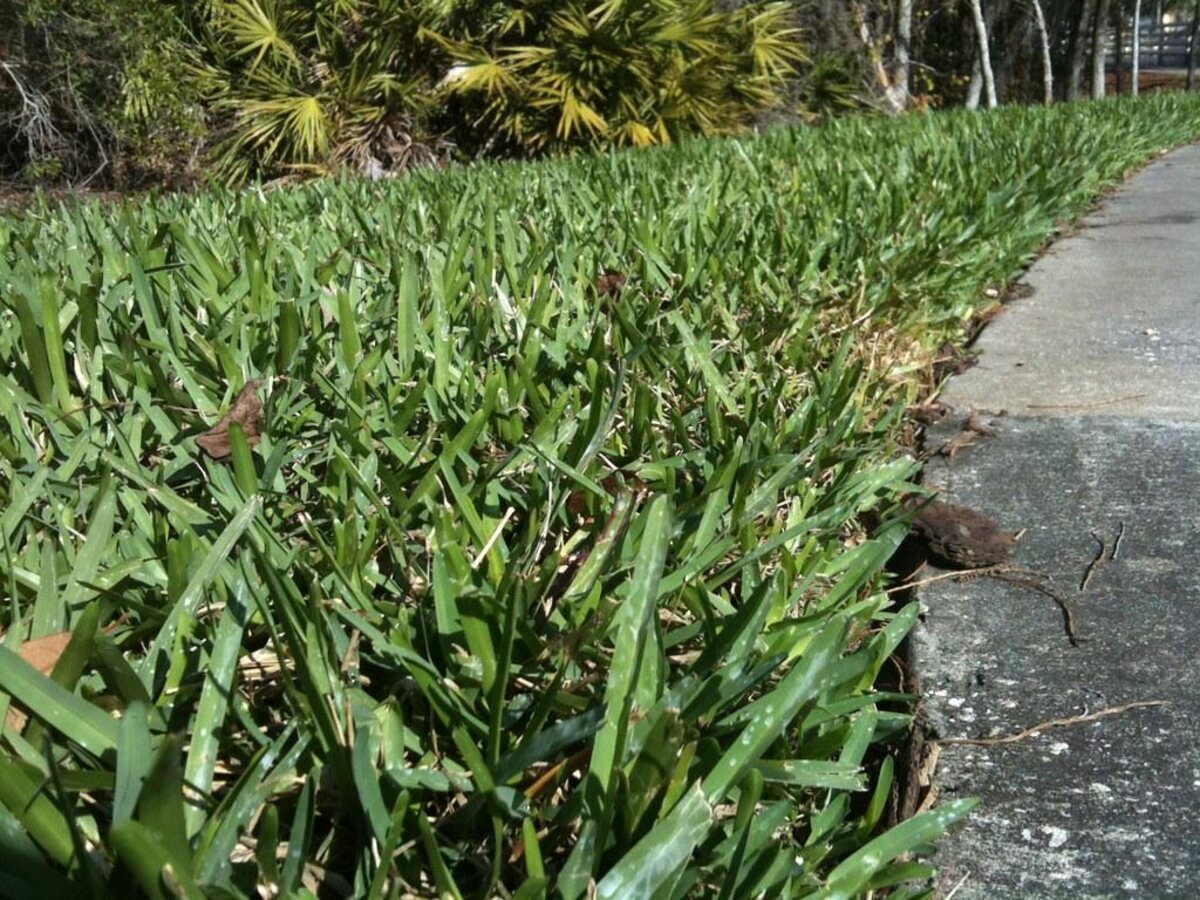Home>Gardening & Outdoor>Landscaping Ideas>How To Find A Lost Key In Grass


Landscaping Ideas
How To Find A Lost Key In Grass
Published: February 3, 2024
Discover effective landscaping ideas to help you find a lost key in grass. Learn practical tips and techniques for locating misplaced items in your yard.
(Many of the links in this article redirect to a specific reviewed product. Your purchase of these products through affiliate links helps to generate commission for Storables.com, at no extra cost. Learn more)
Introduction
Losing a key in the grass can be a frustrating experience. Whether it slipped out of your pocket during a picnic, fell while playing outdoor games, or got misplaced during gardening, the process of finding a lost key amidst the vast expanse of grass can seem daunting. However, with the right approach and tools, it's possible to locate the missing key and alleviate the stress associated with its loss.
In this comprehensive guide, we'll explore the challenges of finding a lost key in grass and provide practical techniques and tips to aid in the search. From understanding the intricacies of grassy terrain to utilizing specific tools and methods, we'll equip you with the knowledge needed to navigate this common predicament. Additionally, we'll delve into preventative measures to minimize the likelihood of future key loss in grassy areas.
So, if you've ever found yourself frantically searching through the grass for a misplaced key, fret not. By the end of this guide, you'll be equipped with the expertise to tackle this situation with confidence and ease. Let's embark on this enlightening journey to unravel the mysteries of finding a lost key in grass.
Key Takeaways:
- Don’t let a lost key in the grass stress you out! Use tools like metal detectors and grid search methods to efficiently find it, and prevent future losses with secure key attachments and designated storage areas.
- Finding a lost key in grass is challenging, but with patience and the right tools, like flashlights and rakes, it’s manageable. Prevent future losses by using brightly-colored key accessories and key-tracking apps.
Read more: How To Find A Lost Earring In The Grass
Understanding the Challenges of Finding a Lost Key in Grass
Locating a lost key in grass presents a unique set of challenges due to the nature of the terrain. The dense and often uneven composition of grass can obscure the key from plain sight, making the search process intricate and time-consuming. Additionally, factors such as the length of the grass, environmental conditions, and the key’s size further complicate the task.
One of the primary challenges is the camouflage effect caused by the grass. When a key falls into the grass, it can easily blend in with the surrounding foliage, making it nearly indistinguishable to the human eye. This is especially true if the key is small or if the grass is particularly lush and dense. Moreover, the varying heights of grass blades create a multi-dimensional search area, requiring a methodical approach to cover the entire space efficiently.
Furthermore, environmental factors such as sunlight, dew, or rain can impact the visibility and accessibility of the lost key. Glare from the sun or moisture from dew and rain can hinder the search process, adding another layer of complexity to the task at hand.
Another challenge stems from the physical act of combing through the grass. The repetitive motion of bending, kneeling, and raking through the grass can be physically taxing, especially if the search area is extensive. This can lead to fatigue and frustration, potentially impacting the thoroughness of the search.
Understanding these challenges is crucial in approaching the search for a lost key in grass with patience and strategic thinking. By acknowledging the complexities involved, individuals can better prepare themselves mentally and equip themselves with the right tools and techniques to overcome these obstacles effectively.
Tools and Techniques for Locating a Lost Key in Grass
When faced with the task of finding a lost key in grass, employing the right tools and techniques can significantly enhance the efficiency and success of the search. Here are some essential tools and methods to aid in the quest for the elusive key:
1. Metal Detector:
Utilizing a metal detector can greatly expedite the process of finding a lost key in grass. These devices emit electromagnetic fields to detect metal objects, making them invaluable for pinpointing the key’s location amidst the grassy terrain. By systematically sweeping the metal detector over the search area, you can identify the precise spot where the key is located, saving time and effort.
2. Rake or Garden Hoe:
A rake or garden hoe can be used to gently comb through the grass, particularly if the key is not deeply buried. These tools allow you to carefully part the grass and expose any hidden objects, increasing the chances of spotting the lost key without causing damage to it.
Read more: How To Find A Lost Diamond In The Grass
3. Flashlight:
If the search extends into low-light conditions or shaded areas, a flashlight becomes essential. It can help illuminate the grass and make the key more visible, especially if it has reflective surfaces. Additionally, a flashlight can aid in the search if the key has fallen into a crevice or undergrowth within the grass.
4. Grid Search Method:
Implementing a systematic grid search is a proven technique for covering the entire search area efficiently. Divide the grassy area into sections and methodically search each portion, ensuring thorough coverage and minimizing the risk of overlooking the key. This approach is particularly effective for large or expansive search areas.
5. Magnet on a String:
If the lost key is made of ferrous metal, a magnet attached to a string can be a simple yet effective tool for retrieval. Lower the magnet into the grass and move it around to attract and lift the key, allowing for swift recovery.
By leveraging these tools and techniques, you can approach the task of finding a lost key in grass with confidence and precision, maximizing the likelihood of a successful outcome.
Step-by-Step Guide to Finding a Lost Key in Grass
When facing the daunting prospect of locating a lost key in grass, a systematic approach can streamline the search process and increase the chances of a successful recovery. Follow this step-by-step guide to navigate the task with efficiency and precision:
1. Assess the Search Area:
Begin by assessing the size and characteristics of the grassy area where the key was lost. Take note of any potential hiding spots, such as patches of dense grass, shaded areas, or uneven terrain, to strategize your search approach effectively.
2. Gather Essential Tools:
Equip yourself with the necessary tools, including a metal detector, rake or garden hoe, flashlight, and a magnet on a string if the key is ferrous. Having these tools at hand will facilitate a thorough and comprehensive search.
3. Conduct a Visual Sweep:
Initiate the search with a visual sweep of the immediate vicinity where the key was last seen. Look for any glimmers or reflections that may indicate the key’s presence on the surface of the grass.
4. Employ a Metal Detector:
If the key remains elusive, utilize a metal detector to systematically scan the search area. Move the detector in a grid pattern, listening for the device’s signal to pinpoint the key’s location beneath the grass.
5. Use a Rake or Garden Hoe:
If the key is not detected by the metal detector, gently comb through the grass using a rake or garden hoe. Carefully part the grass to expose any concealed objects, keeping an eye out for the lost key.
6. Illuminate the Area:
If the search extends into shaded or low-light areas, use a flashlight to illuminate the grass and enhance visibility. The light can reveal the key’s whereabouts, especially if it has reflective surfaces.
7. Employ the Grid Search Method:
Divide the search area into sections and conduct a methodical grid search. This approach ensures comprehensive coverage of the entire area, reducing the likelihood of overlooking the key.
8. Utilize a Magnet on a String:
If the lost key is made of ferrous metal, employ a magnet attached to a string to attract and retrieve the key from the grass. Lower the magnet into the grass and move it around to capture the key’s metallic properties.
By following these systematic steps and employing the recommended tools and techniques, you can effectively navigate the process of finding a lost key in grass, increasing the likelihood of a successful recovery.
Read more: How To Find A Ring In The Grass
Tips for Preventing Future Key Loss in Grass
While finding a lost key in grass can be a challenging endeavor, taking proactive measures to prevent future losses can save you from the frustration and inconvenience of a repeat scenario. Consider the following tips to minimize the risk of losing keys in grassy areas:
1. Secure Key Attachments:
Ensure that keys are securely attached to your person or belongings when in grassy environments. Utilize keychains with reliable clasps or consider using retractable key holders to keep keys tethered to your clothing or accessories.
2. Designate Key Storage Areas:
Establish designated storage areas for keys when spending time in grassy locations. Utilize secure pockets, pouches, or containers to store keys, minimizing the likelihood of accidental loss during outdoor activities.
3. Utilize Brightly-Colored Key Accessories:
Enhance the visibility of keys by attaching brightly-colored key accessories or keychains. Vibrant colors make keys more conspicuous and easier to spot if dropped in grassy areas, reducing the risk of overlooking them during retrieval.
Read more: How To Find Grass-Fed Beef
4. Conduct Regular Key Checks:
Implement a habit of conducting regular key checks when in grassy environments. Periodically verify that keys are securely fastened and accounted for, reducing the chances of overlooking a lost key until it becomes a more challenging retrieval task.
5. Employ Key-Finding Devices:
Consider utilizing key-finding devices equipped with Bluetooth technology. These devices can be paired with smartphones and provide proximity alerts to help locate misplaced keys within a specific range, minimizing the time and effort required for retrieval.
6. Minimize Distractions:
When handling keys in grassy areas, minimize distractions and focus on securely managing your belongings. Distractions can increase the likelihood of accidental key loss, making attentiveness a crucial factor in preventing such mishaps.
7. Use Key-Tracking Apps:
Explore the use of key-tracking apps that utilize GPS technology to log the last known location of keys. These apps can aid in retracing steps and identifying the general vicinity where a lost key may be located, streamlining the search process.
By implementing these preventive measures and incorporating mindful habits when handling keys in grassy environments, you can significantly reduce the risk of future key loss, ensuring a more secure and stress-free experience outdoors.
Read more: How To Find A Landscaping Job
Conclusion
Embarking on the quest to find a lost key in grass can be a challenging yet manageable endeavor with the right approach and resources at your disposal. By understanding the intricacies of grassy terrain and employing effective tools and techniques, the daunting task of key retrieval can be transformed into a methodical and successful pursuit.
Throughout this guide, we’ve explored the unique challenges posed by the search for a lost key in grass, emphasizing the camouflage effect of the terrain and the impact of environmental conditions on visibility. By acknowledging these obstacles, individuals can approach the search process with patience and strategic thinking, enhancing their likelihood of a successful recovery.
Furthermore, the guide has provided a comprehensive array of tools and techniques to aid in the search, including the use of metal detectors, rakes, flashlights, and systematic grid search methods. These resources, when utilized in tandem, can streamline the search process and increase the chances of locating the lost key efficiently.
Moreover, the step-by-step guide outlined in this resource offers a structured approach to navigating the search for a lost key in grass, empowering individuals to conduct a thorough and methodical exploration of the search area. By following these systematic steps and employing the recommended tools and techniques, the daunting task of key retrieval can be transformed into a manageable and successful pursuit.
Looking ahead, the guide has also presented valuable tips for preventing future key loss in grassy areas, emphasizing proactive measures such as secure key attachments, designated storage areas, and the use of key-finding devices. By incorporating these preventive strategies into everyday practices, individuals can minimize the risk of encountering similar predicaments in the future.
In conclusion, the journey to find a lost key in grass is one that requires patience, strategic thinking, and the utilization of effective tools and techniques. By embracing the insights and recommendations provided in this guide, individuals can approach this task with confidence and resilience, ultimately transforming a seemingly daunting challenge into a manageable and successful endeavor.
Armed with the knowledge and resources outlined in this guide, individuals can navigate the search for a lost key in grass with clarity and determination, ensuring a swift and triumphant recovery. Remember, with the right approach and perseverance, no lost key in the grass is beyond retrieval.
Frequently Asked Questions about How To Find A Lost Key In Grass
Was this page helpful?
At Storables.com, we guarantee accurate and reliable information. Our content, validated by Expert Board Contributors, is crafted following stringent Editorial Policies. We're committed to providing you with well-researched, expert-backed insights for all your informational needs.










0 thoughts on “How To Find A Lost Key In Grass”